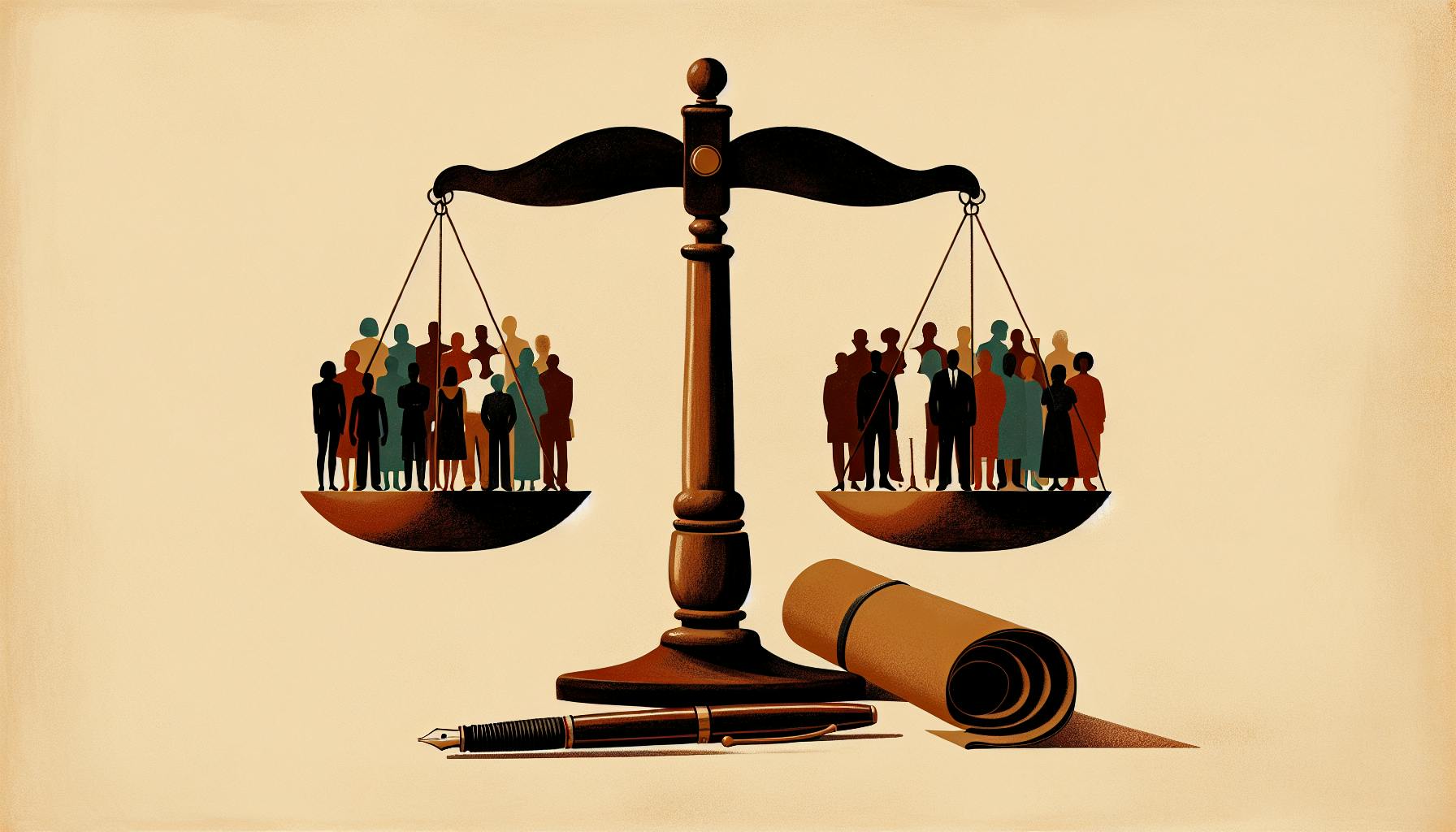Most would agree that the Aurora theater shooting was a horrific tragedy that caused immense suffering.
This analysis will examine the trial and sentencing of James Holmes with sensitivity, seeking principled understanding over judgment.
We will cover the charges, evidence, verdict, and broader social implications in hopes of finding meaning amidst the pain.
Introduction to the Aurora Theater Massacre and Trial
Overview of the Aurora Theater Shooting
On July 20, 2012, a mass shooting occurred inside a movie theater in Aurora, Colorado during a midnight screening of the film The Dark Knight Rises. The gunman, later identified as James Holmes, entered the Century 16 movie theater dressed in tactical clothing and began shooting into the audience with multiple firearms. Twelve people were killed and 70 others were injured in the attack. It was one of the deadliest mass shootings in recent U.S. history. The shooting sent shockwaves through the community of Aurora and the nation.
Profile of James Holmes
James Holmes was a 24-year-old former neuroscience graduate student at the University of Colorado Anschutz Medical Campus in Aurora. Prior to the shooting, he had no criminal record and there is still debate regarding his mental state and motives behind the attack. Some reports indicated he had been seeing a psychiatrist and that he allegedly mailed a notebook to this psychiatrist detailing some plans and drawings about the shooting. There were also indications he may have suffered from mental illnesses like schizophrenia. However, a definitive diagnosis was never confirmed.
Legal Charges: First Degree Murder and Attempted Murder
James Holmes was arrested outside the theater shortly after the shooting and charged with 24 counts of first degree murder, 140 counts of attempted first degree murder, one count of possession of explosives, and inciting violence. The charges included two separate charges for each killing victim to recognize different theories of first degree murder. He pleaded not guilty by reason of insanity. If found insane, he would be sent to a mental institution instead of prison. After lengthy legal proceedings, Holmes was ultimately convicted on all 165 charges and sentenced to 12 consecutive life sentences plus 3,318 years without parole.
The Trial of James Holmes
James Holmes was the perpetrator of a mass shooting at a movie theater in Aurora, Colorado in 2012, which killed 12 people and injured 70 others. He was arrested at the scene and faced a lengthy trial process.
Chronology of the Trial Process
-
July 20, 2012 - Holmes opens fire inside the Century 16 movie theater during a midnight screening of The Dark Knight Rises, killing 12 and injuring 70. He is arrested outside the theater.
-
July 30, 2012 - Holmes makes his first court appearance and is formally charged with 24 counts of murder and 116 counts of attempted murder. He is held without bail.
-
March 27, 2013 - Holmes' attorneys say he is willing to plead guilty to avoid the death penalty. Prosecutors reject the offer.
-
December 11, 2013 - Judge Carlos Samour orders another sanity evaluation of Holmes after determining the first was flawed.
-
July 10, 2015 - Holmes is found guilty on all 165 counts against him, including murder and attempted murder.
The Insanity Defense: Not Guilty by Reason of Insanity
Holmes pleaded not guilty by reason of insanity. His defense team argued he was in the throes of a psychotic episode and was unable to distinguish right from wrong when he committed the killings.
Prosecutors maintained that Holmes carefully planned every detail of the mass shooting and fully understood the consequences of his actions.
Ultimately, the jury rejected the insanity defense.
Judge Carlos Samour's Role
Judge Carlos Samour presided over the trial and was responsible for key decisions, including:
- Ordering a second sanity evaluation of Holmes when flaws were found in the initial report
- Denying additional delays requested by the defense for more time to evaluate Holmes
- Allowing live video testimony from some witnesses, over objections from the defense
Judge Samour sought to balance fairness and efficiency in moving the lengthy trial forward.
District Attorney George Brauchler's Prosecution
District Attorney George Brauchler led the prosecution and argued that Holmes was legally sane at the time of the shooting. Key aspects of the prosecution's case included:
- Evidence showing Holmes' elaborate planning and preparation for the attack
- Holmes' warning one month prior about killing people
- Details about Holmes' weapons purchases and bomb-making materials
- Eyewitness accounts about his demeanor and actions during and after the shooting
The prosecution maintained that Holmes was fully in control of his faculties and aware of the consequences of his actions.
Colorado State Public Defender's Defense Strategy
The Colorado State Public Defender represented Holmes. The defense strategy centered around pleading not guilty by reason of insanity caused by schizophrenia and other mental illnesses. Key aspects included:
- Multiple mental health experts testifying about Holmes' mental state
- Evidence of Holmes' history of mental health issues
- Arguments that Holmes was delusional and detached from reality during the shooting
- Calling Holmes' parents to testify and humanize him for the jury
The defense unsuccessfully attempted to show Holmes did not understand right from wrong when he committed the killings.
Critical Evidence Presented
The trial of James Holmes for the 2012 Aurora theater shooting brought forth significant evidence and testimony that shaped the outcome of the case. The prosecution laid out details of the arsenal of weapons used in the attack, while expert witnesses debated Holmes' mental state and possible psychiatric disorders.
Arsenal of Weapons: Glock 22, Remington 870, and Smith & Wesson M&P15
Holmes was armed with multiple firearms during the shooting, including a Glock 22 .40 caliber handgun, a Remington 870 Express Tactical 12-gauge shotgun, and a Smith & Wesson M&P15 semi-automatic rifle. He had purchased the weapons legally in the months prior along with over 6,000 rounds of ammunition. The prosecution emphasized the extreme firepower as evidence of Holmes' premeditation and intent.
The Booby-Trapped Apartment and Bomb Squad Intervention
Upon entering Holmes' apartment, a bomb squad discovered that it was elaborately booby-trapped with various incendiary and explosive devices. It took the squad several days to carefully dismantle the setup which was intended to harm first responders. This demonstrated Holmes' meticulous planning and calculation.
Testimonies on Schizoid and Schizotypal Personality Disorders
Defense experts testified that Holmes exhibited symptoms of schizoid personality disorder such as social detachment and emotional coldness. They also presented a schizotypal personality disorder diagnosis marked by odd beliefs and eccentricities. However, prosecution experts asserted these did not impair Holmes' ability to distinguish right from wrong.
Dysphoric Mania and Schizoaffective Disorder Claims
The defense argued Holmes suffered from dysphoric mania causing delusions and psychotic episodes. They also claimed he demonstrated signs of schizoaffective disorder combining schizophrenia symptoms like hallucinations with severe mood disturbances. But prosecution experts contested these diagnoses and highlighted Holmes' elaborate planning over many months as evidence that he understood the consequences of his actions.
sbb-itb-585a0bc
Verdict and Sentencing
James Holmes was convicted on July 16, 2015 of 24 counts of first degree murder, 140 counts of attempted first degree murder, one count of possessing explosives, and one count of using explosives to damage property. He was found guilty on all 165 charges against him.
Conviction of James Holmes on Multiple Counts
The jury unanimously found Holmes guilty of the following charges:
- 24 counts of first degree murder
- 140 counts of attempted first degree murder
- 1 count of possessing explosives
- 1 count of using explosives to damage property
In total, there were 12 people killed and 70 people injured in the attack. Holmes was convicted on 24 counts of first degree murder, one for each victim who died. He was also convicted on 140 counts of attempted first degree murder, accounting for each of the people injured in the shooting.
The conviction showed that the jury believed the evidence demonstrated Holmes deliberately and intentionally carried out the mass shooting. They did not accept the defense's argument that Holmes was legally insane at the time of the attack.
The Sentence: 12 Consecutive Life Sentences without Parole
On August 26, 2015, Holmes was formally sentenced to 12 consecutive life sentences without the possibility of parole - one life sentence for each person killed. He received another 3,318 years for the attempted murder convictions.
Holmes will spend the rest of his life imprisoned with no chance of parole or early release. He is currently serving his sentence at USP Allenwood in Pennsylvania.
The sentence means Holmes will never be released back into society. The judge determined public safety required permanently separating Holmes from the community.
Mental Health Considerations in Sentencing
Holmes underwent several mental health evaluations during the trial to determine his state of mind. While two court-appointed psychiatrists diagnosed him with schizophrenia, the jury rejected an insanity plea.
Ultimately Holmes' mental health diagnoses did not factor into sentencing. The sheer magnitude of the attack and number of victims led the judge to determine life without parole was the appropriate punishment.
Allocution and Restitution: The Aftermath of Sentencing
Over the course of three days, dozens of survivors and victims’ family members gave emotional victim impact statements at an allocution hearing. They described the horror of the shooting and devastating impacts on their lives.
The judge also ordered Holmes to pay nearly $1 million in restitution. The bulk of the money would go toward meeting victims' medical expenses and lost wages. Any civil suits could result in additional financial judgements against Holmes.
Post-Trial: Incarceration and Legacy
James Holmes' Incarceration: Colorado State Penitentiary to USP Allenwood
After being sentenced to 12 consecutive life sentences without the possibility of parole, James Holmes was transferred to the Colorado State Penitentiary in Cañon City. He spent several years incarcerated there before being transferred in 2021 to USP Allenwood, a high security federal prison in Pennsylvania.
At both prisons, Holmes spends 23 hours a day isolated in his cell due to his high profile status. He continues serving his sentence with no possibility of parole or early release.
Impact on Gun Laws in Colorado
The Aurora theater shooting had a significant influence on gun laws in Colorado. Just months after the shooting, Colorado legislators passed universal background checks and a ban on high-capacity magazines.
These measures faced legal challenges but were ultimately upheld in court, establishing important legal precedents regarding gun regulations. The changes highlighted the state's shift in views on firearm access in response to mass shootings.
Comparative Analysis with Columbine High School Massacre
There are some notable parallels between the 1999 Columbine High School massacre and James Holmes' 2012 Aurora theater attack:
- Both took place in the Denver metropolitan area of Colorado
- Mass shootings with multiple fatalities, injuries, and attempted murders
- Perpetrators were young white men around a similar age
- Meticulously planned attacks over a long period of time
- Utilized multiple firearms and explosives
- Shocked the nation and sparked debates about gun laws, mental health policies, etc.
However, there are also some key differences:
- Columbine killers took their own lives during the attack, while Holmes surrendered
- Columbine appeared motivated by bullying, while Holmes' motive remained unclear
- Columbine killers targeted a school, Holmes attacked a movie theater
The List of Rampage Killers: James Holmes' Place
James Holmes has a notorious place on the list of rampage killers and mass shooters. As of 2022, his attack ranks as the 7th deadliest mass shooting by a single perpetrator in modern American history.
With 12 killed and 70 injured, the shooting was notable for its high number of casualties. Holmes joins other infamous names like the shooters in Las Vegas, Orlando, Virginia Tech and Sandy Hook. His extreme violence and meticulous planning align him with this list of mass murderers.
Conclusion: Reflecting on the Trial and Its Consequences
The Enduring Pain of Survivors and Victims' Families
The Aurora theater shooting trial has come to an end, but the suffering continues for those impacted by this tragedy. The survivors and families of victims still face immense grief and trauma from that horrific night. Many struggle with PTSD, depression, and anxiety as they try to piece their lives back together.
While the trial may have provided some closure, it cannot erase the pain of losing a loved one or the memories of what they endured in theater 9. The community around Aurora will be forever changed by this event. Support and compassion remain critical in helping these individuals heal.
The Trial's Influence on National Discourse
This high-profile case fueled debate around issues like gun violence, mental health care, and the criminal justice system. It brought these difficult conversations to the national spotlight.
The trial highlighted concerns about gaps in gun laws that allow dangerous individuals to obtain firearms. It also increased awareness around mental health and the need for better resources and treatment options.
While progress still needs to be made, this case influenced policymakers and shaped public opinion around these critical problems impacting society. It sparked advocacy and reform efforts across the country.
Preventative Lessons from the Aurora Theater Shooting
There are insights from this tragedy that could inform violence prevention in the future. This includes better mental health screening and gun background checks.
It also highlighted the need for increased security precautions in public places. Theater chains and other venues examined their own preparedness and ability to respond to attacks after Aurora.
While risks cannot be fully eliminated, important lessons here could help prevent similar acts of mass violence. Continued vigilance and safety planning are key to reducing these threats over time.


